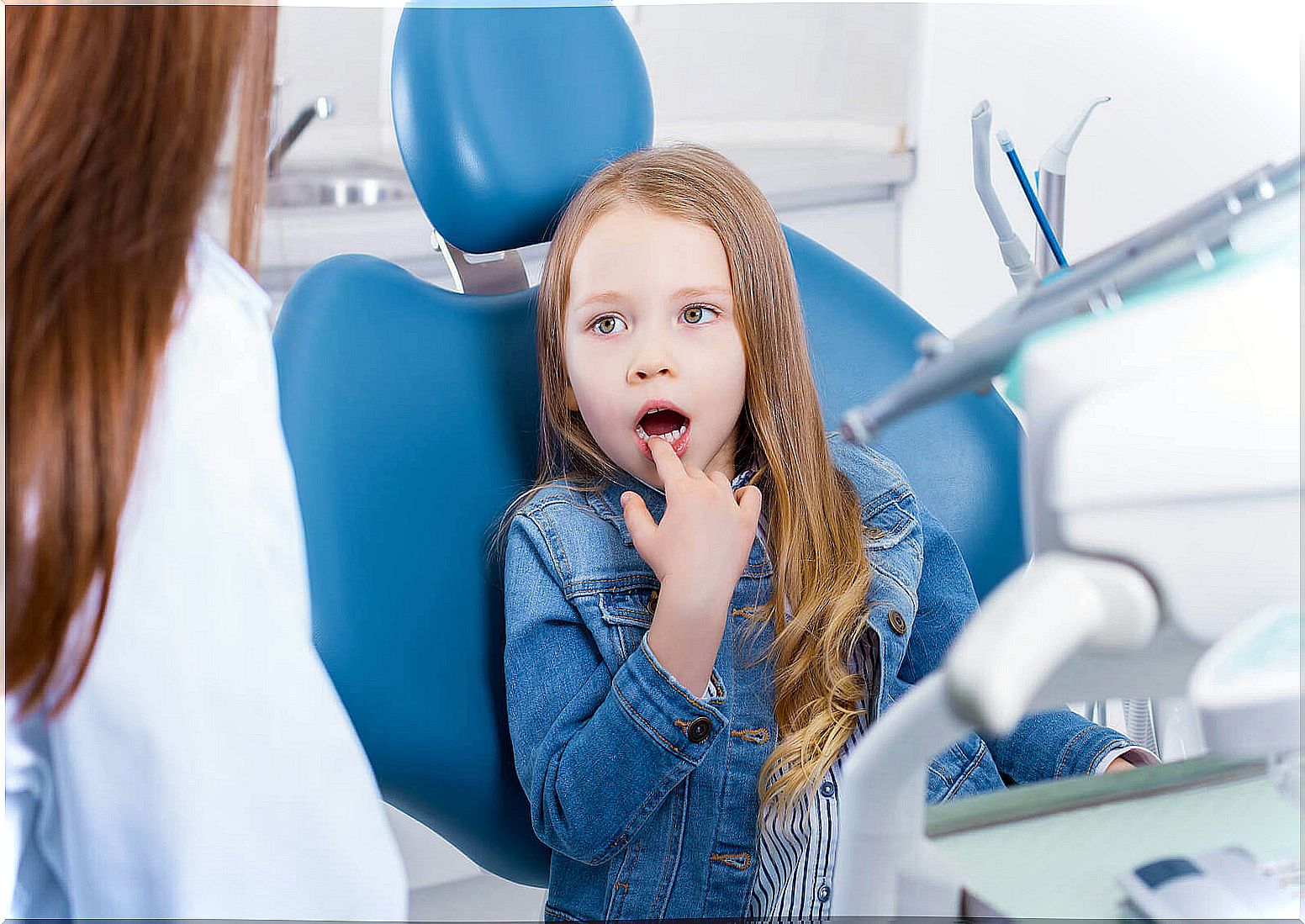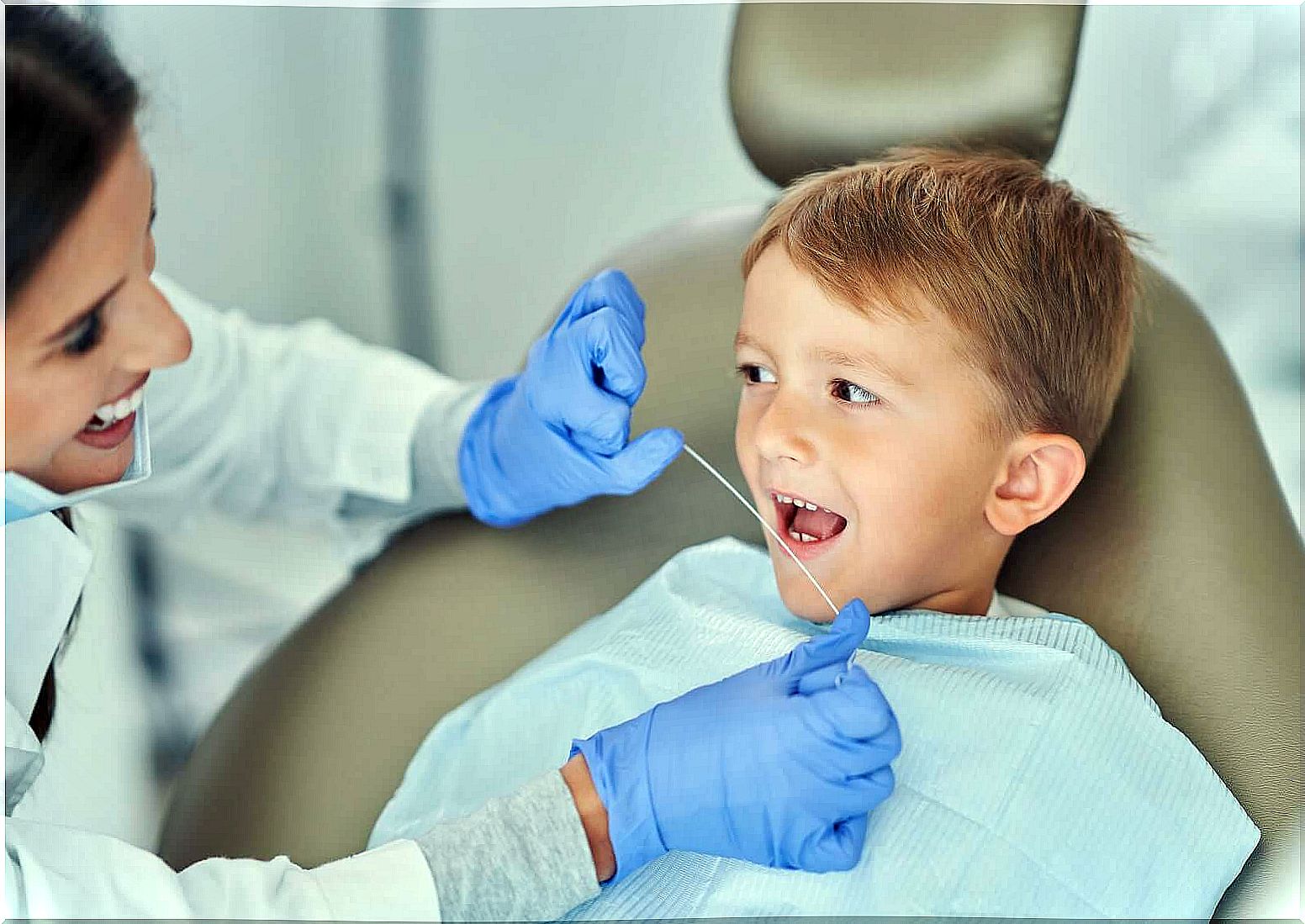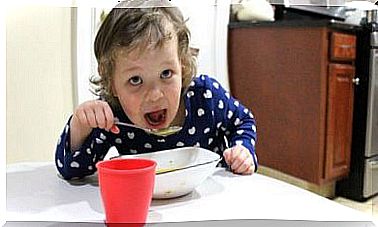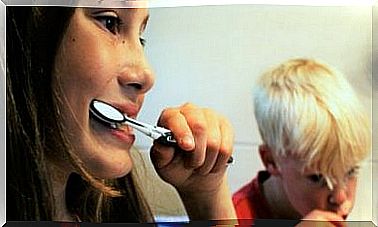Most Common Dental Problems In Children

There are dental problems in children that are very common, but which are almost always preventable. When they appear, the normal functions of the mouth, such as chewing, speaking and swallowing, are altered.
In the following lines, we will talk about the most common dental problems in children, as well as their causes and treatments. We’ll also remember what you can do to keep your little one’s mouth healthy.
Most common dental problems in children

Caries
Among the dental problems in children, it is the most frequently observed. It is the loss of mineral tissue in the dental elements due to the action of acids produced by bacteria present in the mouth.
When the disease starts, small white spots can be seen on the tooth surface. As it progresses, there is a color change to black or brown and tissue loss, forming cavities or holes in the teeth.
As mentioned, the loss of minerals that make up the dental element occurs due to the action of acids produced by bacteria present in the mouth when fermenting sugars in the diet. Poor oral hygiene and high sugar consumption predispose to the emergence of this pathology.
There is a particular form of tooth decay in young children called “early childhood tooth decay” or “baby bottle decay”. It is associated with frequent consumption of sugary milk and lack of hygiene after feeding. The permanence of sugar on the dental surfaces favors the appearance of these rapidly progressing caries, especially on the front teeth.
Consequences of this dental problem in children
The presence of caries and its progress due to lack of treatment causes several complications in the child’s life:
- Presence of pain : when the depth of the lesion increases, caries approaches the dental pulp, where the nerves are, thus generating pain and sensitivity.
- Destruction and loss of the tooth : the progression of the lesion wears away and even breaks the tooth element. This, in turn, causes movement of neighboring pieces, malocclusions and problems with biting.
- Infections : caries can be complicated by the infection of the tooth or of the hard or soft tissue adjacent to the affected element.
- Damage to the permanent tooth : when decay advances in a temporary element, it can affect the correct formation of the permanent tooth underneath.
- Low self-esteem and social problems : broken and stained teeth can be a source of ridicule, leaving the child embarrassed.
Treatments for tooth decay
The type of treatment to reverse caries will depend on its size and evolution time. An incipient caries can be treated with the therapeutic application of fluoride. For cavities with cavities and tissue loss, it is necessary to clean and restore with fillings. Regardless of the type of caries, it is always necessary to treat them and delay their evolution to avoid complications.
dental trauma
Teeth dents are one of the most common dental problems in children. They usually occur when the little ones start to walk and, later, they are associated with accidents during games or sports practices. The most affected teeth are the upper incisors, as they are the most exposed.
Blows can affect both baby teeth and permanent teeth. The dental crown can be partially or completely broken, it can also fall out of place or even be thrown out of the mouth.
The approach to be adopted usually depends on the type of dentition affected, but in the face of trauma to the mouth it is always advisable to go to the dentist immediately. If the tooth comes out of the mouth, it must be collected and transported in milk or saline solution.
The practitioner will examine the affected tissues and decide on the appropriate treatment. It can range from the simple placement of fluoride and posterior controls, restorations or fillings, root canal treatments or even the re-implantation of the piece in place and its immobilization. As we mentioned, it is necessary to go to the dentist urgently because the faster we act, the better the prognosis.
Malocclusions
Misaligned teeth and complications from biting are usually dental problems in children that appear regularly. Observing the position of the teeth as they are born and the relationship of the upper and lower teeth when biting is important to detect any abnormalities in the occlusion of the small ones.
Controls at home and regular visits to the dentist help detect these problems early. The sooner they start being treated, the easier and more comfortable the treatment is usually.
This type of dental problem in children can be caused by several reasons:
- Presence of dysfunctional habits, such as thumb-sucking, prolonged use of a pacifier or bottle, and mouth breathing.
- Absence or premature loss of baby teeth.
- Hereditary and genetic factors.
- Bruxism.
Treatments will depend on the type and degree of malocclusion and also the child’s age, as well as the type of dentition present in the mouth. Depending on the case, the problem can be corrected through the use of orthodontic appliances, fixed with brackets or invisible.

Gingivitis
The presence of plaque around the tooth can cause inflammation of the gums. They turn red, bleed easily, hurt, and have bad breath in the mouth. The cause of this dental problem in children is poor oral hygiene. Using a toothbrush and flossing and consulting with your pediatric dentist is usually sufficient to treat this condition.
How to avoid the most common dental problems in children?
The practice of good oral hygiene habits and healthy behavior will help keep your mouth healthy. Here are some tips to prevent dental problems in children:
- Maintain good oral hygiene : brush children’s teeth two or three times a day with a soft-bristled toothbrush and fluoride toothpaste. Complement with daily floss and, if the dentist recommends, with mouthwashes.
- Avoid cariogenic foods : reduce or avoid consumption of foods high in sugar. It is recommended that the little ones receive a varied and nutrient-rich diet.
- Eliminate harmful habits : in cases of children who suck their thumbs, bite their nails, breathe through their mouths and use a pacifier or bottle for longer than recommended, it is necessary to seek help to eliminate these harmful practices for the mouth.
- See the dentist : regular and early visits to the dentist help keep your mouth healthy. Thus, the professional will be able to detect any problem early and provide guidance on oral hygiene.
Dental problems in children can be avoided
Dental problems in children can arise from an early age. There are several pathologies that frequently occur in the mouth of the little ones. A healthy mouth is necessary for the good development of children’s lives. Therefore, proper oral hygiene, healthy practices and visits to the dentist will keep your little ones smile healthy.









